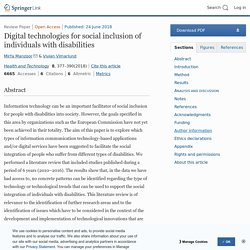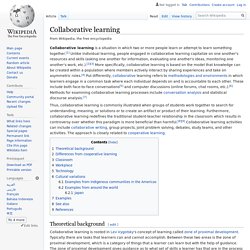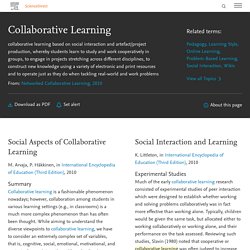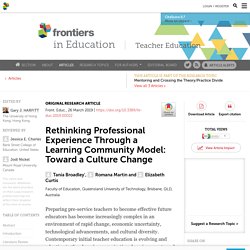

Unconscious bias. Cross-Cultural Collaboration. Digital Group Work. The Future of Social Relations.
More ... 10. This section presents the results of the literature review described in the previous section.

The results show (i) the number of articles included in the review, year by year, (ii) the type of technologies that were discussed in the articles, and (iii) the different types of disability that the technological solutions aimed to support. The number of studies that described or discussed technologies that can be used to support different types of disabilities Below, Fig. 2 shows the distribution of the 46 selected studies in terms of their year of publication. The aggregate number of articles included in the literature review in terms of their year of publication From the table above, we can see that no specific pattern or year-by-year systematic increase in the number of publications that were included in our literature review data set was identified.
The types of technologies that were discussed in the articles The various types of disability that were discussed in the selected articles. From Digital Divide to Social Inclusion: A Tale of Mobile Platform Empowerment in Rural Areas. The digital divide in rural areas is an important social issue, especially in developing countries.

Although Internet and broadband penetration have increased in the world generally, there are many obstacles for rural China to get access to ICT (Information and Communication Technology) and its services. The mobile platform is regarded as a novel and effective tool to reduce the digital divide. Based on a case of one mobile platform, namely WeCountry in Chinese rural areas, this study illustrates how a mobile platform bridges the digital divide and helps rural areas achieve social inclusion. ►▼ Show Figures Figure 1 This is an open access article distributed under the Creative Commons Attribution License which permits unrestricted use, distribution, and reproduction in any medium, provided the original work is properly cited The digital divide in rural areas is an important social issue, especially in developing countries.
Mobile learning for quality education and social inclusion (2010) Does mobile instant messaging facilitate social presence in online communication? A two-stage study of higher education students. 5 Ice-breaker Games To Play On Zoom. 3 Easy Icebreaker Games to Play on Video Conferences. Empower Every Voice. Collaborative learning. Collaborative learning is a situation in which two or more people learn or attempt to learn something together.[1] Unlike individual learning, people engaged in collaborative learning capitalize on one another's resources and skills (asking one another for information, evaluating one another's ideas, monitoring one another's work, etc.).[2][3] More specifically, collaborative learning is based on the model that knowledge can be created within a population where members actively interact by sharing experiences and take on asymmetric roles.[4] Put differently, collaborative learning refers to methodologies and environments in which learners engage in a common task where each individual depends on and is accountable to each other.

These include both face-to-face conversations[5] and computer discussions (online forums, chat rooms, etc.).[6] Methods for examining collaborative learning processes include conversation analysis and statistical discourse analysis.[7] Classroom[edit] Japan[edit] Collaborative Learning - an overview. Future Considerations?

As our campus libraries have developed and areas have been repurposed, quiet study spaces have given way to collaborative learning areas and vice versa. This is a particular issue at our City and Footscray campuses, where a greater concentration of student numbers leads to a constant battle for space. One of the few negatives to the learning commons model is that the collaborative learning environment does lead to increased noise.
Drawing a balance between the needs of our various cohorts of students can be difficult at times, especially as requirements change during the academic year. We find that our students will move furniture, repurpose rooms, and create collaborative areas according to specific needs. Our study rooms have been created to cater for groups of six … maximum. If we could start from scratch, we would be looking at soundproofed study rooms which could be designated quiet study or group discussion areas depending on the time of year. Cooperative Online Education. Rethinking Professional Experience Through a Learning Community Model: Toward a Culture Change.
Introduction The evolution of pre-service teacher education and professional experience over the last two decades is linked with a vast number of changes in teaching and learning approaches, educational technologies and innovative learning design, and is influenced by the development of new educational policy and quality standards established to meet the expectation of high quality graduates (Darling-Hammond, 2006; McLoughlin and Nagabhushan, 2014; Adamson and Darling-Hammond, 2015; Le Cornu, 2015).

Teacher education currently takes place in a complex ever-changing environment that is affected by policy reform, recurrent organizational restructuring, increased cultural diversity in the population and growing economic pressures (Stephenson and Ling, 2014; Fitzgerald and Knipe, 2016). Professional experience placements are a key aspect of pre-service teachers' preparation for teaching while completing university-based teacher education courses.